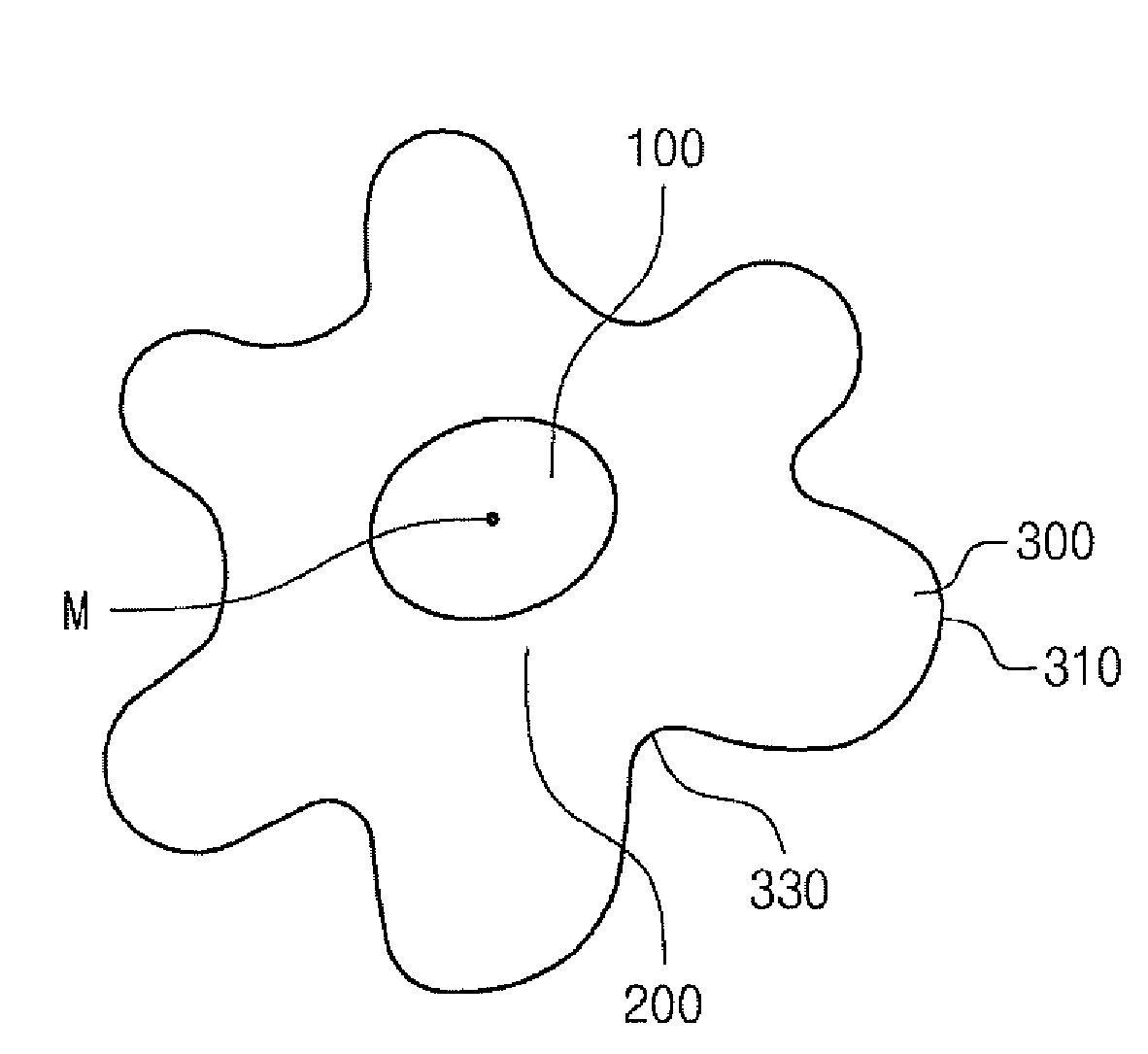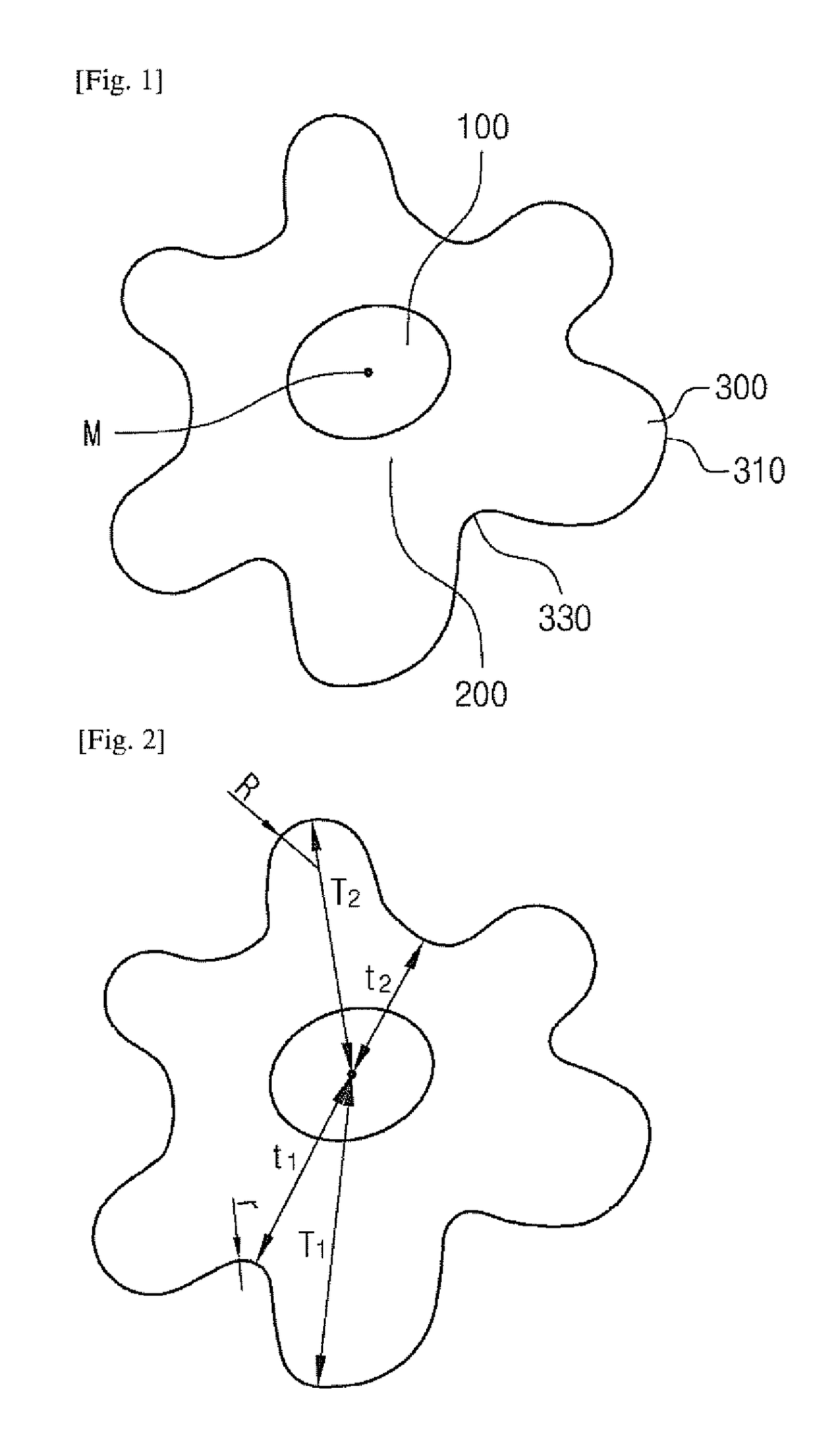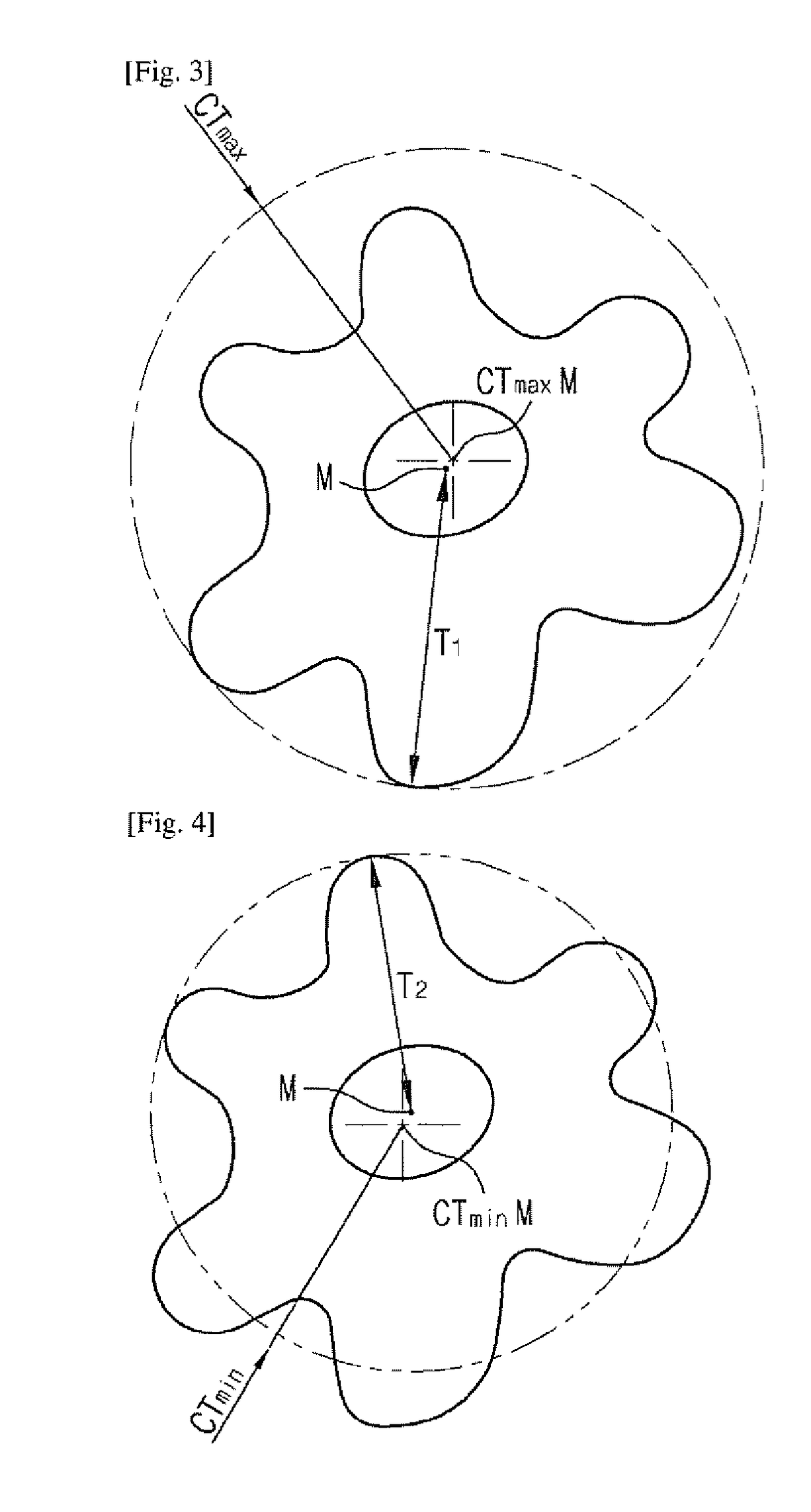Modified cross-section hollow fiber, and fiber assembly using same
a cross-section, fiber technology, applied in the direction of fibre treatment, filament/thread forming, sanitary towels, etc., can solve the problems of difficult to ensure bulkiness, and difficult to improve the hollow ratio, etc., to achieve stable shape, high hollow ratio, and high thermal insulation
- Summary
- Abstract
- Description
- Claims
- Application Information
AI Technical Summary
Benefits of technology
Problems solved by technology
Method used
Image
Examples
examples 4 to 6
[0125]Fibers having 4, 6, and 12 volume control parts were prepared by using polyester having a limiting viscosity of 0.64. A fiber having staple-fiber fineness of 5.2 De and 125 / 24De / fil. was prepared by applying a crimp by a crimper after performing spinning at a spinning temperature of 285° C. and a spinning velocity of 1,000 m / min and then stretching at a stretching rate of 3.8 and then warp knitted matters were prepared by using the fibers, respectively.
example 7
[0126]A fiber having 6 volume control parts was prepared by using polyester having a limiting viscosity of 0.64. A fiber having staple-fiber fineness of 6 De and a fiber length of 64 mm was prepared by applying a crimp by a crimper after performing spinning at a spinning temperature of 285° C. and a spinning velocity of 1,000 m / min and then stretching at a stretching rate of 3.8. The fiber was opened and then prepared in a web form.
example 8
[0127]A fiber having 6 volume control parts was prepared by using polyester having a limiting viscosity of 0.64. A fiber having staple-fiber fineness of 6 De and a fiber length of 64 mm was prepared by applying a crimp by a crimper after performing spinning at a spinning temperature of 285° C. and a spinning velocity of 1,000 m / min and then stretching at a stretching rate of 3.8. The fiber was used and combined with a polyester-based low-melting point yarn to be 25 wt % to prepare a nonwoven fabric by needle punching. The nonwoven fabric had a size of 840*840 (mm*mm) and a weight of about 330 g.
PUM
| Property | Measurement | Unit |
|---|---|---|
| angle | aaaaa | aaaaa |
| thickness | aaaaa | aaaaa |
| thickness | aaaaa | aaaaa |
Abstract
Description
Claims
Application Information
 Login to View More
Login to View More - R&D
- Intellectual Property
- Life Sciences
- Materials
- Tech Scout
- Unparalleled Data Quality
- Higher Quality Content
- 60% Fewer Hallucinations
Browse by: Latest US Patents, China's latest patents, Technical Efficacy Thesaurus, Application Domain, Technology Topic, Popular Technical Reports.
© 2025 PatSnap. All rights reserved.Legal|Privacy policy|Modern Slavery Act Transparency Statement|Sitemap|About US| Contact US: help@patsnap.com



